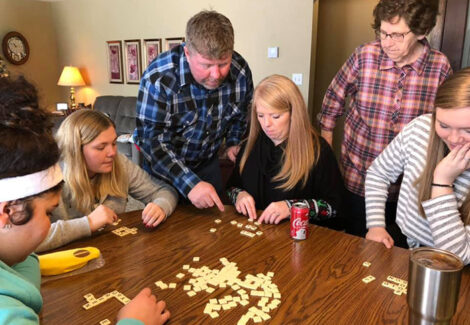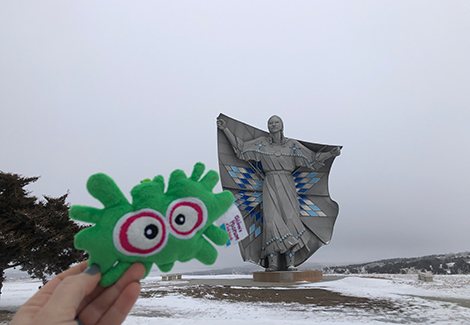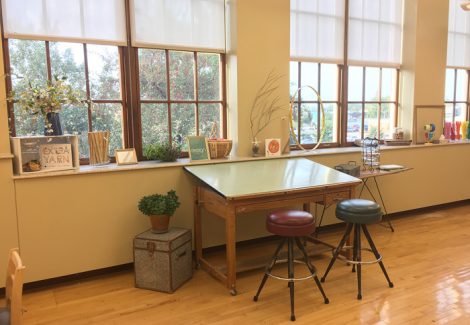The outdoor prairie of the Children’s Museum of South Dakota is home to small wooden boxes affixed to poles that are staked into the ground. These boxes were the topic of discussion during a recent visit of the Innovation Learning Lab. Eighty students from Medary Elementary in Brookings, SD, explored these boxes documenting what they noticed and what they wondered.
“Does something live in the wooden house?”
“Perhaps it’s a birdhouse?”
“What kinds of birds can use those birdhouses?”
“I wonder if the box with slats in it is for bird food.”
The Innovation Learning Lab program invites groups of students to the museum to learn through inquiry and authentic problem-based opportunities. The program is a collaboration between the museum, the Brookings School District, and South Dakota State University.
The students’ curiosity around the wooden houses and their inhabitants spurred a six-week project with two simple goals:
- How can we learn more about the birds that live in this area?
- How can we share the information we learn with others?
The Kindergarten-Third Grade students who were part of this experience rotated through three project areas: activities related to the dietary needs of area birds, exploring what birds need for protection, and research on birds that live in our area.
The first step in planning appropriate feeders for the birds was Identifying the birds by their visual appearance as well as their songs and calls. Throughout this phase of the project, the learners focused on one bird species a week, identifying them, and creating hundreds of bird feeders that met their dietary needs.
Next, the group explored what protection the birds needed in order to stay safe. The students brainstormed and designed housing options thinking from the perspective of the birds even though their creative homes had places for video games, disco balls, and advanced surveillance equipment! Once they started building, however, the students constructed and painted simple birdhouses that would be suitable for use throughout the community.
To round out their growing knowledge, the learners also spent time doing more thorough research on the species of birds local to our community. Here they used technology to identify bird calls and find more extensive information, such as size, nest type, and egg descriptions, of each species of bird. The students compiled their information into reports to share with others.
When the project culminated, the results were significant:
- They created more than 200 bird feeders satisfying area birds’ hunger.
- 12 birdhouses were placed on throughout the Brookings community including on the museum prairie and at Medary Elementary.
- A student-created book, complete with reports and illustrations of area birds. This book is available on the museum floor for guests to read.
- Learners who can differentiate the Fee Bee of the black-capped chickadee from the Yeep of the American Robin.
While these results are significant, perhaps the most important result is piquing student interest in the natural world. It is our hope that their inquisitive nature continues on well beyond this project. When you take time to notice and wonder, such as the Innovation Learning Lab students noticing the wooden boxes on poles on the museum prairie, it can lead into exploration that opens up a new world of learning.




